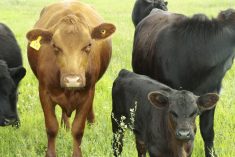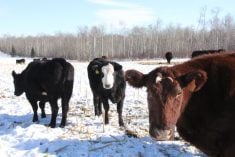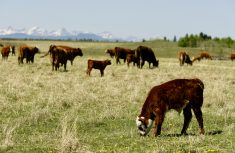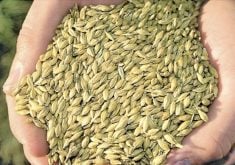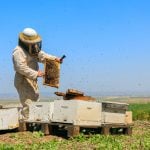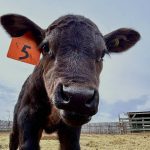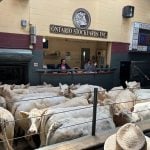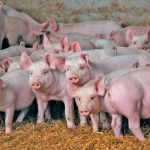These days there is a lot of attention paid to the role that beef cattle play in the environment, particularly their role in global warming. Depending on which camp you are in, cattle are either part of the problem or part of the solution. Those who argue that cattle are part of the problem highlight the fact that cattle are significant contributors to enteric methane emissions. Methane is one of three key greenhouse gasses (along with carbon and nitrous oxide) associated with global warming.
Those on the other side of the argument point to the fact that cattle as ruminant animals convert cellulose-based feedstuffs (i.e. tame and native grasses, preserved forages) that no other animal — including humans — can efficiently digest, into a high-quality and valuable human food, namely beef. In so doing, the cattle industry has led the effort to conserve native grasslands and helped maintain one of Canada’s natural carbon sinks, a fact often overlooked by opponents of the industry.
- Research on the Record with Reynold Bergen: Adapting to a changing climate
- The Gate Post: Cows ain’t coal
Like most good debates, the truth likely lies somewhere in the middle. To help aid in our understanding of this issue, I want to go over the role that the rumen plays in digestion and in so doing highlight areas where the industry can make advances to mitigate the role cattle play in global warming.
In terms of anatomy of the digestive tract, cattle are significantly different from “simple” stomached animals such as pigs. With the latter, digestion is initiated in the abomasum or true stomach and then continues in the lower gut with nutrients such as amino acids, glucose (energy), minerals and vitamins absorbed in various segments of the small intestine. With cattle, there are three organs involved in digestion before the true stomach. These include the rumen, reticulum and the omasum. For this article, I will focus on the rumen and the reticulum, both of which house a rich and diverse population of microbes including bacteria, protozoa and fungi. Of these three groups, the rumen bacteria play the most critical role in the fermentation of ingested feed.
Read Also

Regenerative ranching sees Alberta family through three decades of ups and downs
Alberta ranchers have found regenerative ranching key to surviving ups and downs of the business
To give you an idea of the richness of the rumen bacteria population, estimates put the number of bacterial cells in rumen fluid at 1 x 1,010 cells per millilitre. Comprising this population is a multitude of different species, each with different roles to play in fermentation of feedstuffs. Some are specifically involved in fermentation of fibrous or cellulose-based feeds while others ferment starch-based feedstuffs. In some cases, a given species will switch fermentation substrates depending on availability, while others are involved with the breakdown of specific nutrients such as plant protein. Keep in mind all this fermentation activity is for the survival and growth of the bacteria themselves, not the animal.
There are, however, several byproducts of this fermentation activity, some positive for the animal, some negative. On the positive side, bacterial fermentation of feedstuffs releases volatile fatty acids (VFAs). These include acetate, propionate and butyrate. These VFAs are absorbed across the rumen wall and used as energy substrates by the animal. Second, the bacteria responsible for fermentation eventually pass out of the rumen with the undigested feed and become subject to digestion in the lower gut. These bacteria are a rich source of amino acids that, in most cases, match the requirements of the animal. In combination, the production of VFAs and the growth and proliferation of rumen bacteria allows the ruminant animal to consume feed that no other animal can readily use and convert it into a healthy and valuable human food product.
On the other hand, fermentation results in several rumen gases that have the potential to affect the environment. These include hydrogen, carbon dioxide and nitrogen. Methane is generated in a subsequent step by a specific group of bacteria known as methanogens, which use hydrogen gas to reduce carbon dioxide to methane. This is an important step, as excessive accumulation of hydrogen gas can shut down rumen fermentation. In effect, methane is a hydrogen sink and is eliminated when the animal belches.
The production of methane in the rumen has two serious consequences. First, methane represents an energy loss to the animal, as it is lost to the environment. Perhaps more seriously, as discussed above, methane is a potent greenhouse gas that contributes to global warming.
As you can see, there are indeed two sides to this argument. Personally, I believe it is unrealistic to expect that we will eliminate methane emissions from cattle. The challenge will be to reduce emissions to minimize the environmental impact of the industry. This is an active area of research. Approaches include the search for feed additives/ingredients that alter fermentation and reduce methane emissions, genetic selection of cattle for reduced methane output, manipulation of the rumen microbiome to reduce the role of methanogens in fermentation as well as documenting the true environmental footprint of the industry not just methane emissions.
In the meantime, perhaps the most practical step a producer can take to minimize the GHG emissions of his/her operation is to ensure that it is run in the most efficient and sustainable manner possible.






